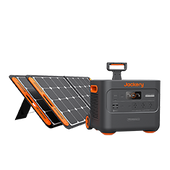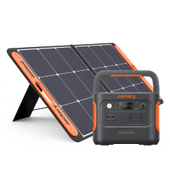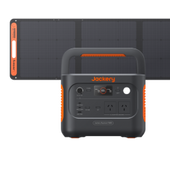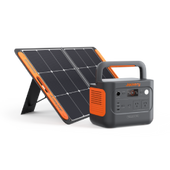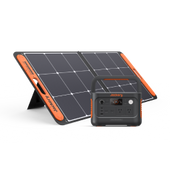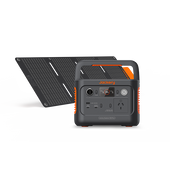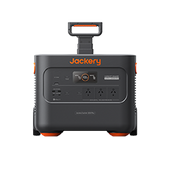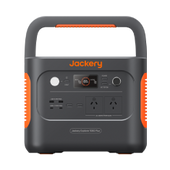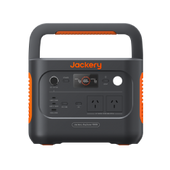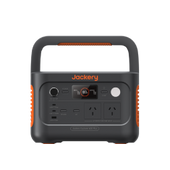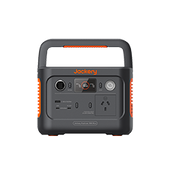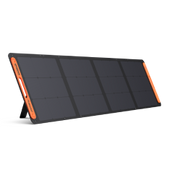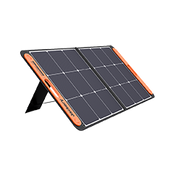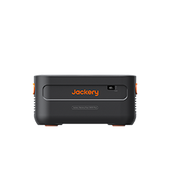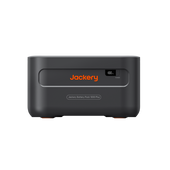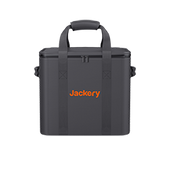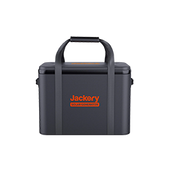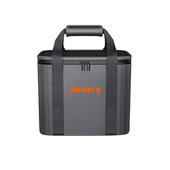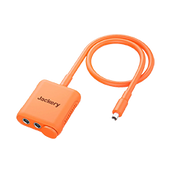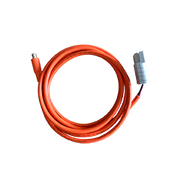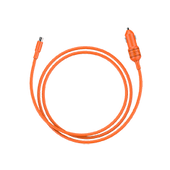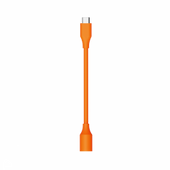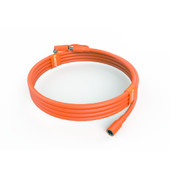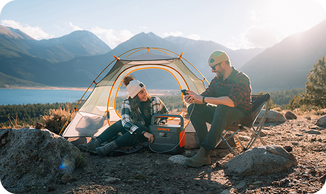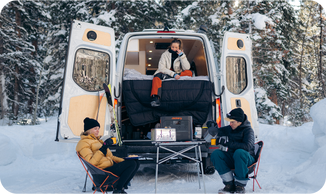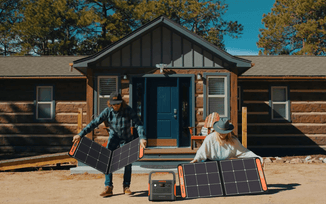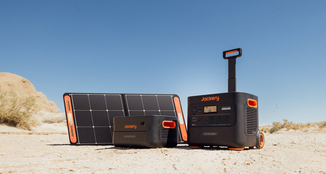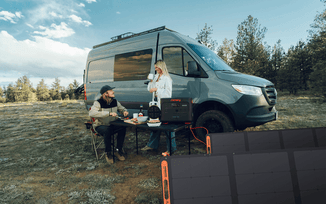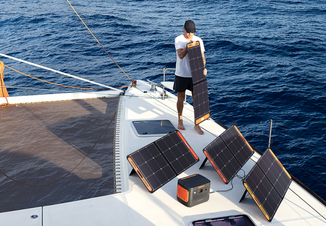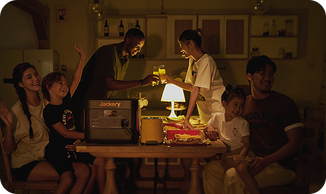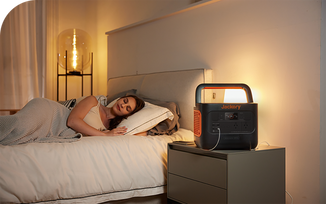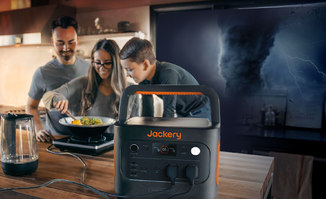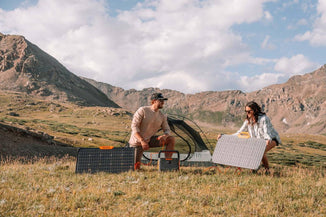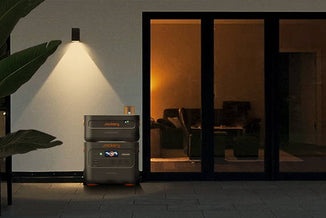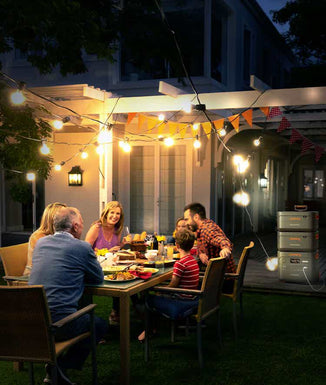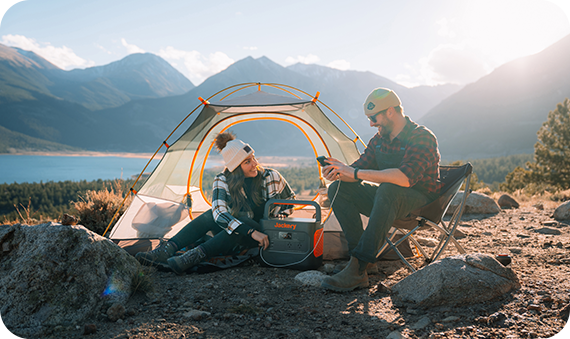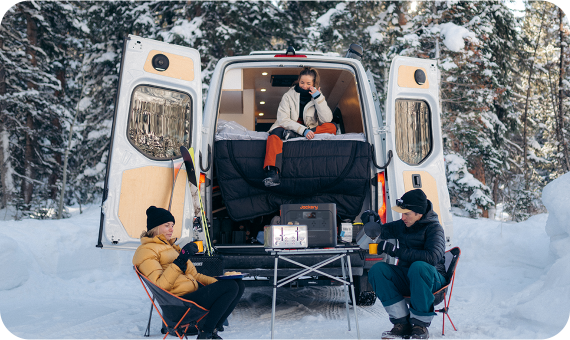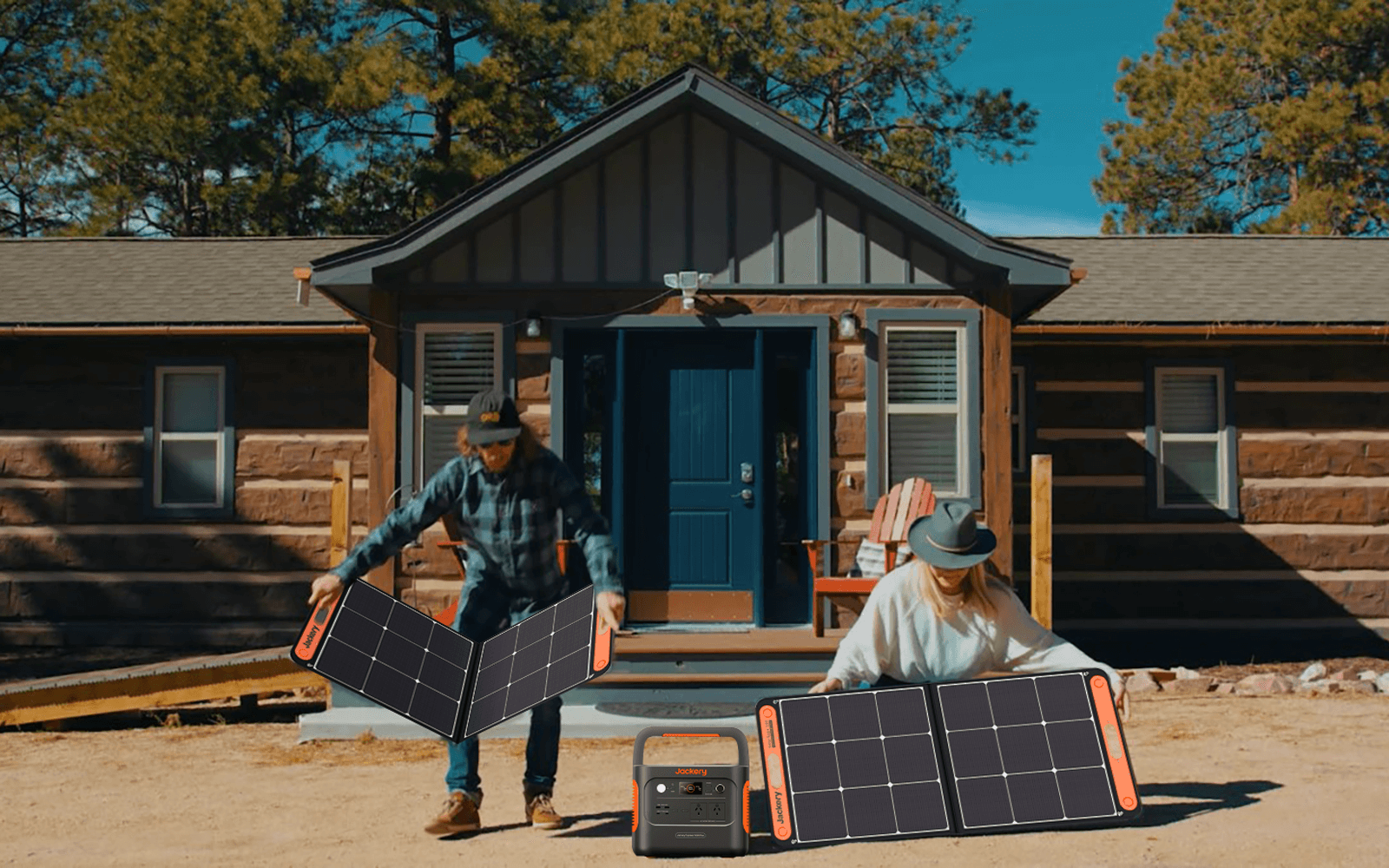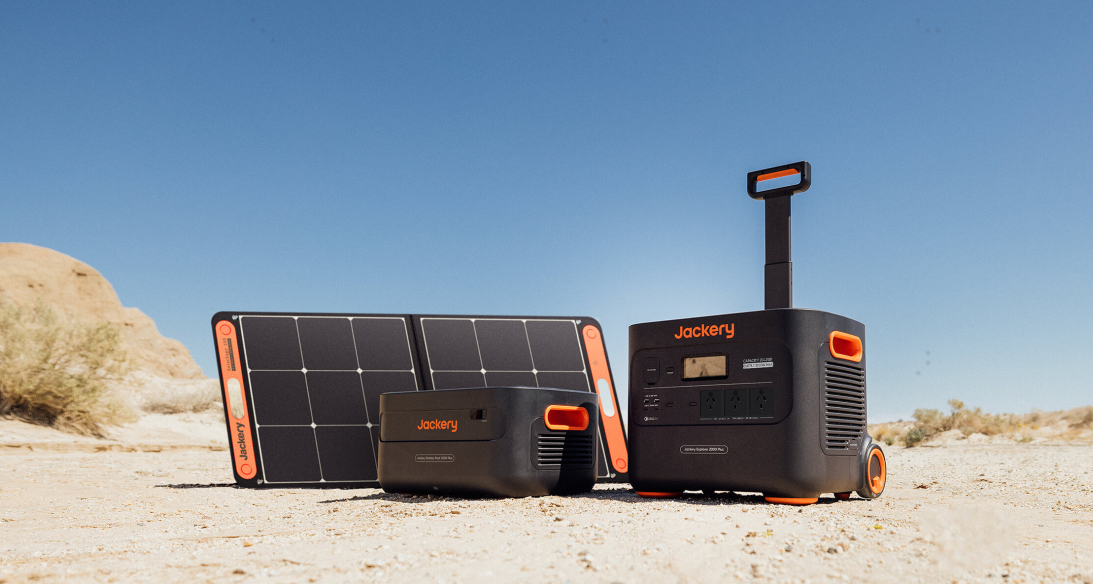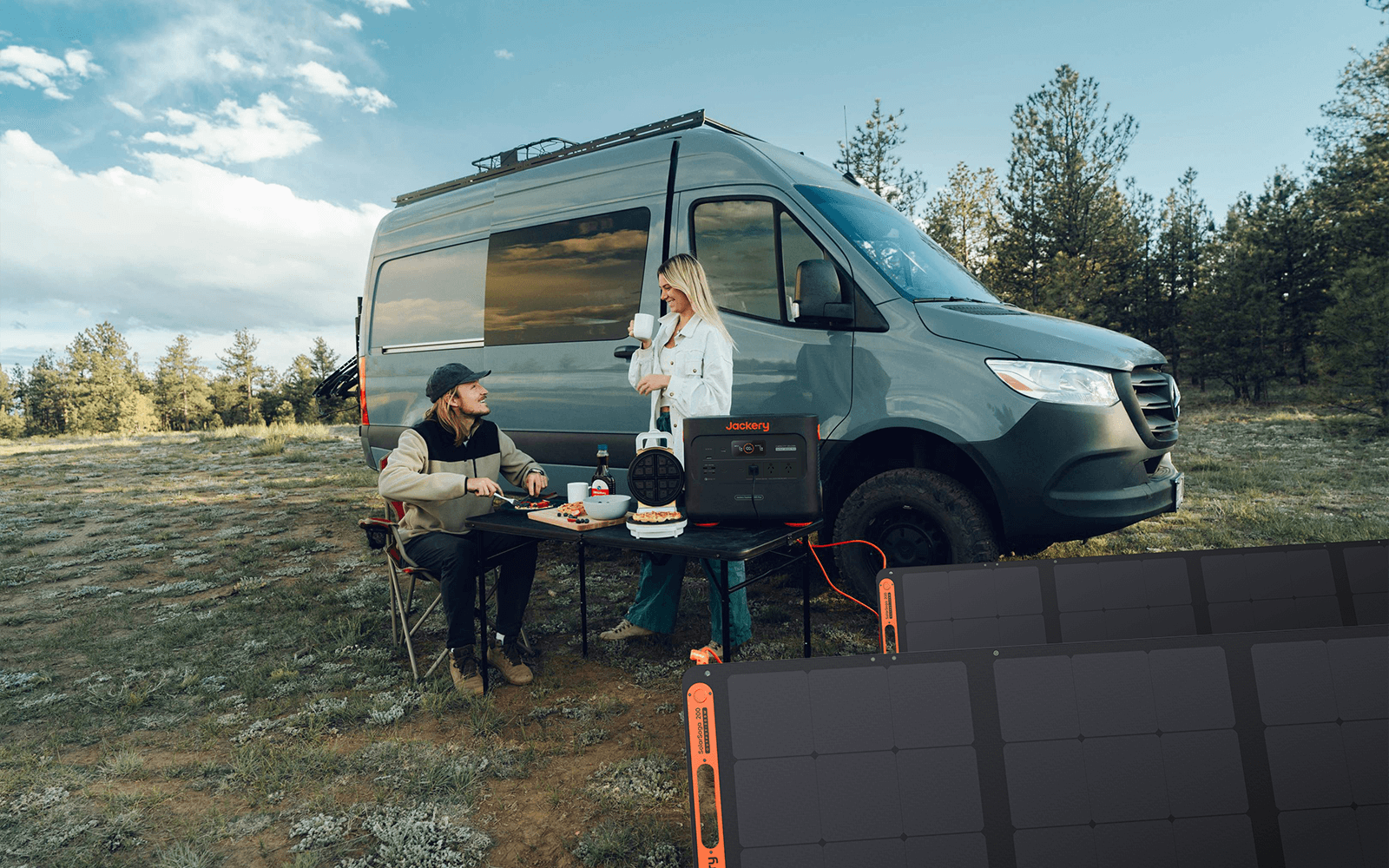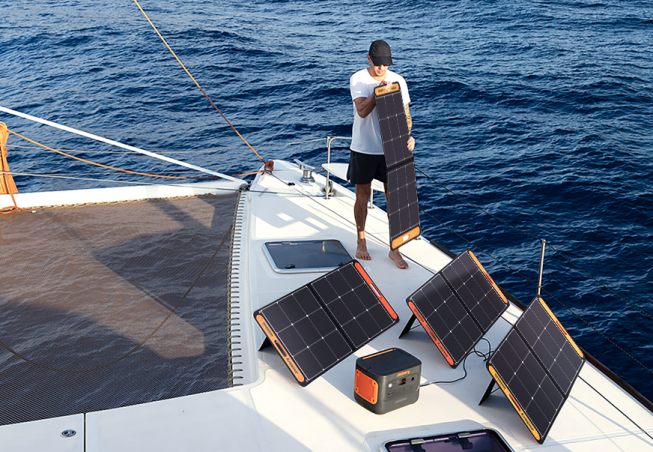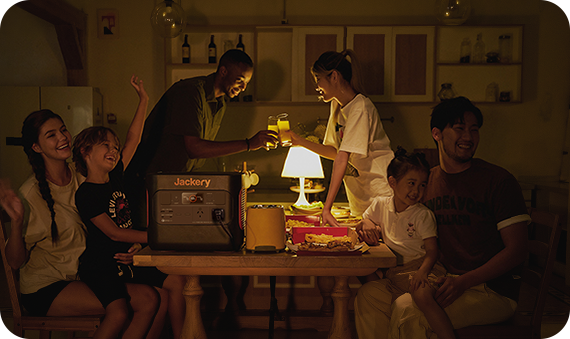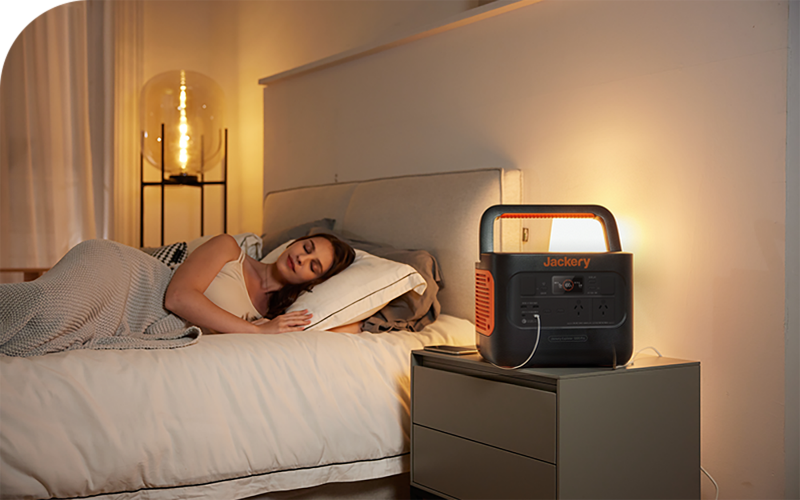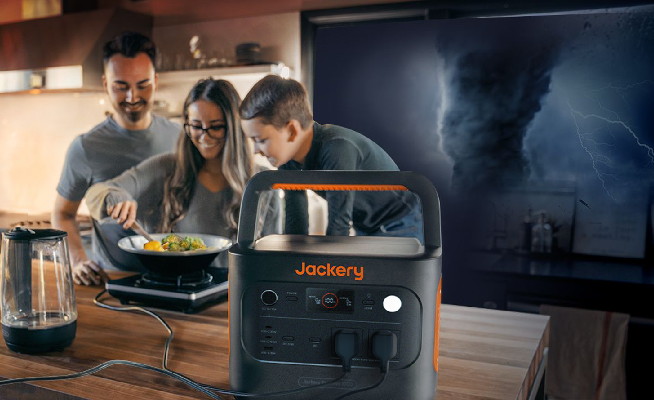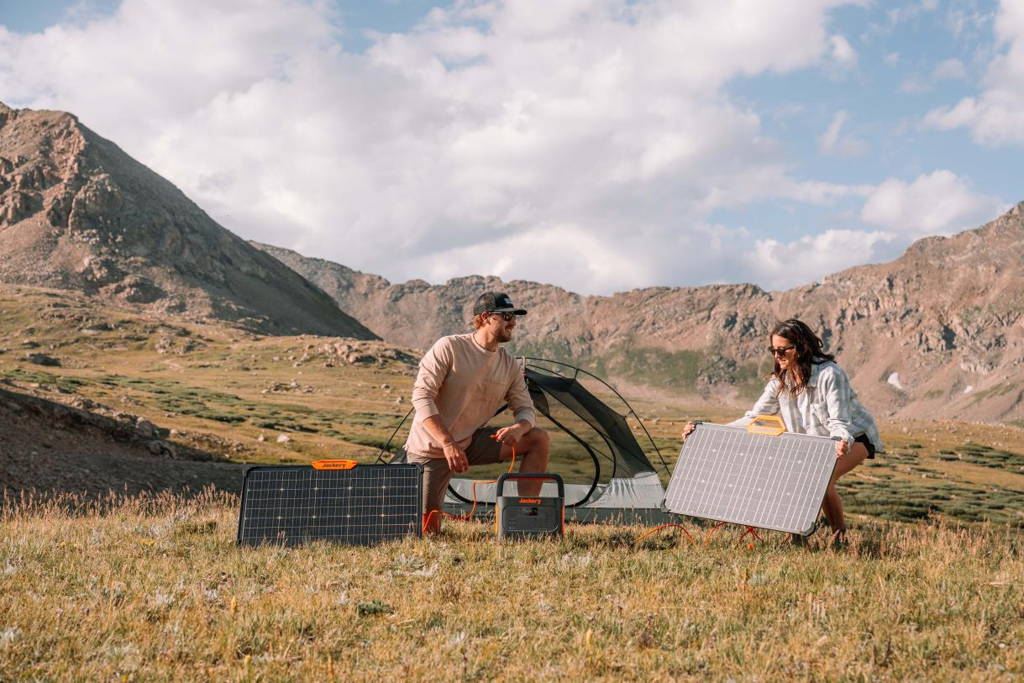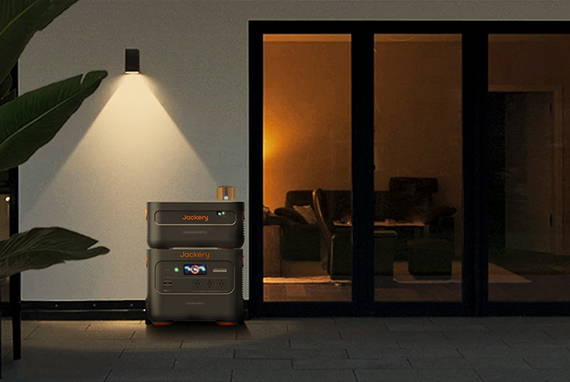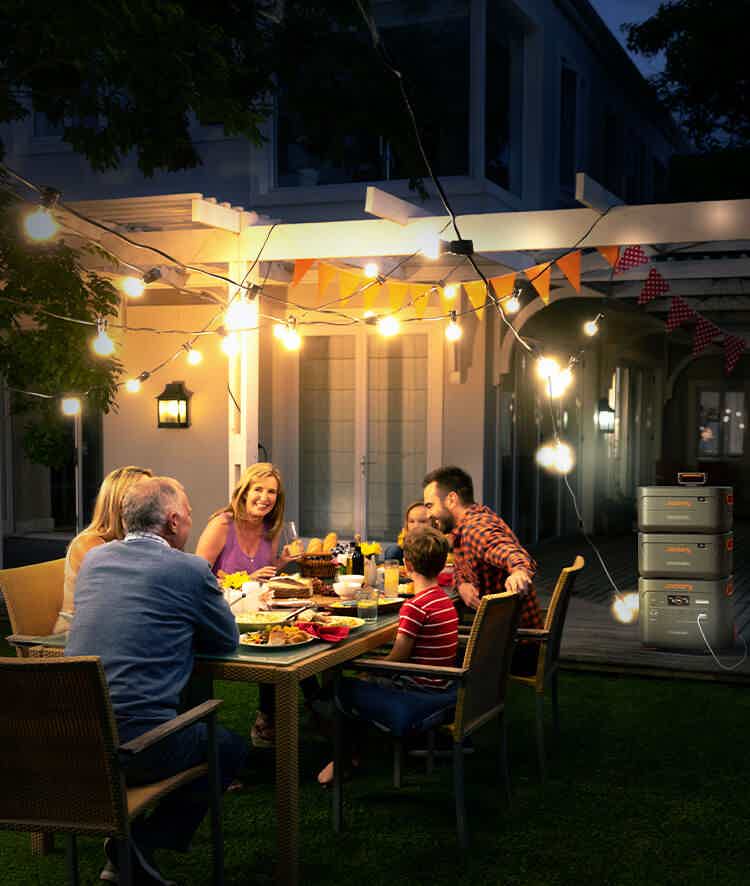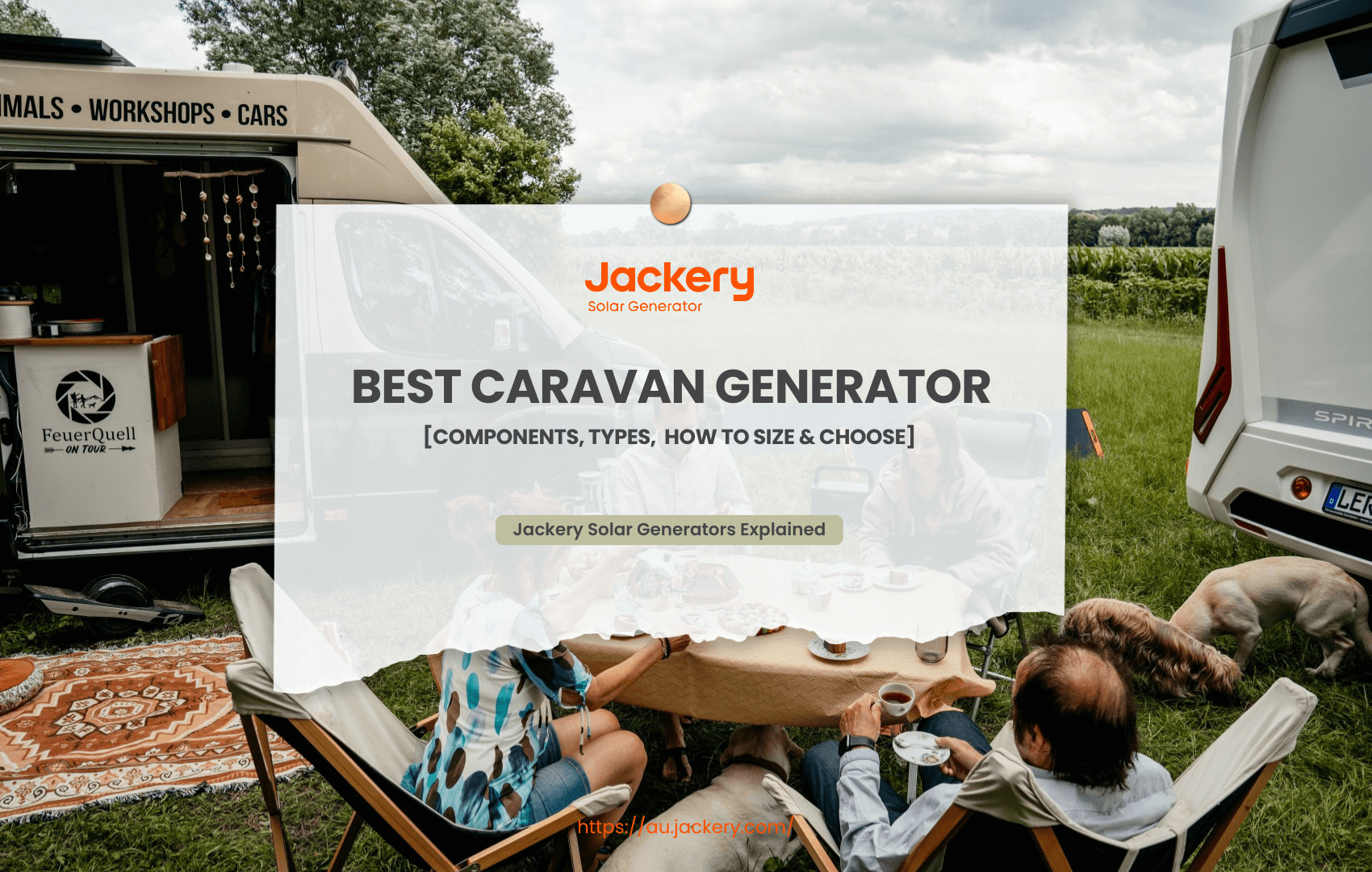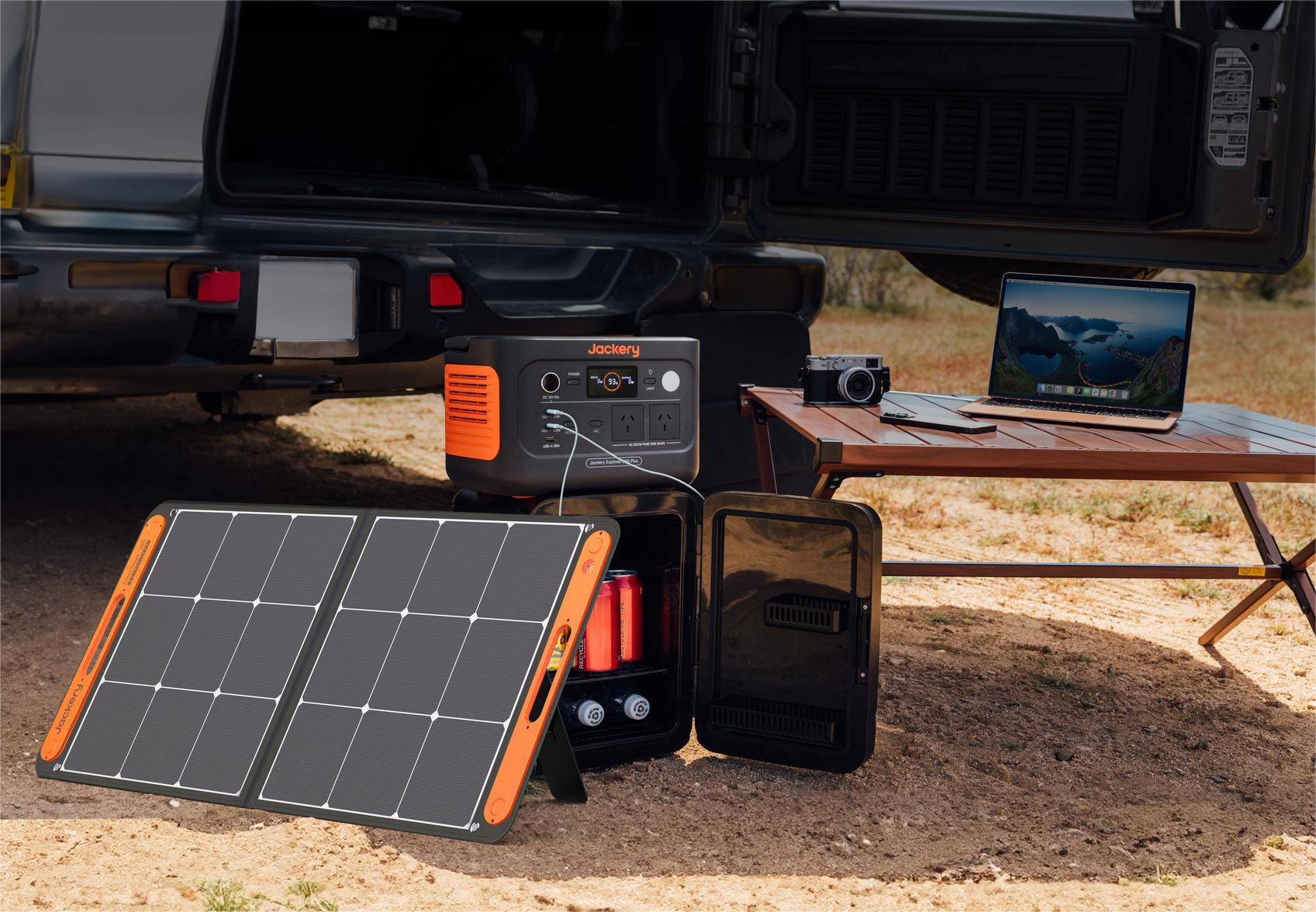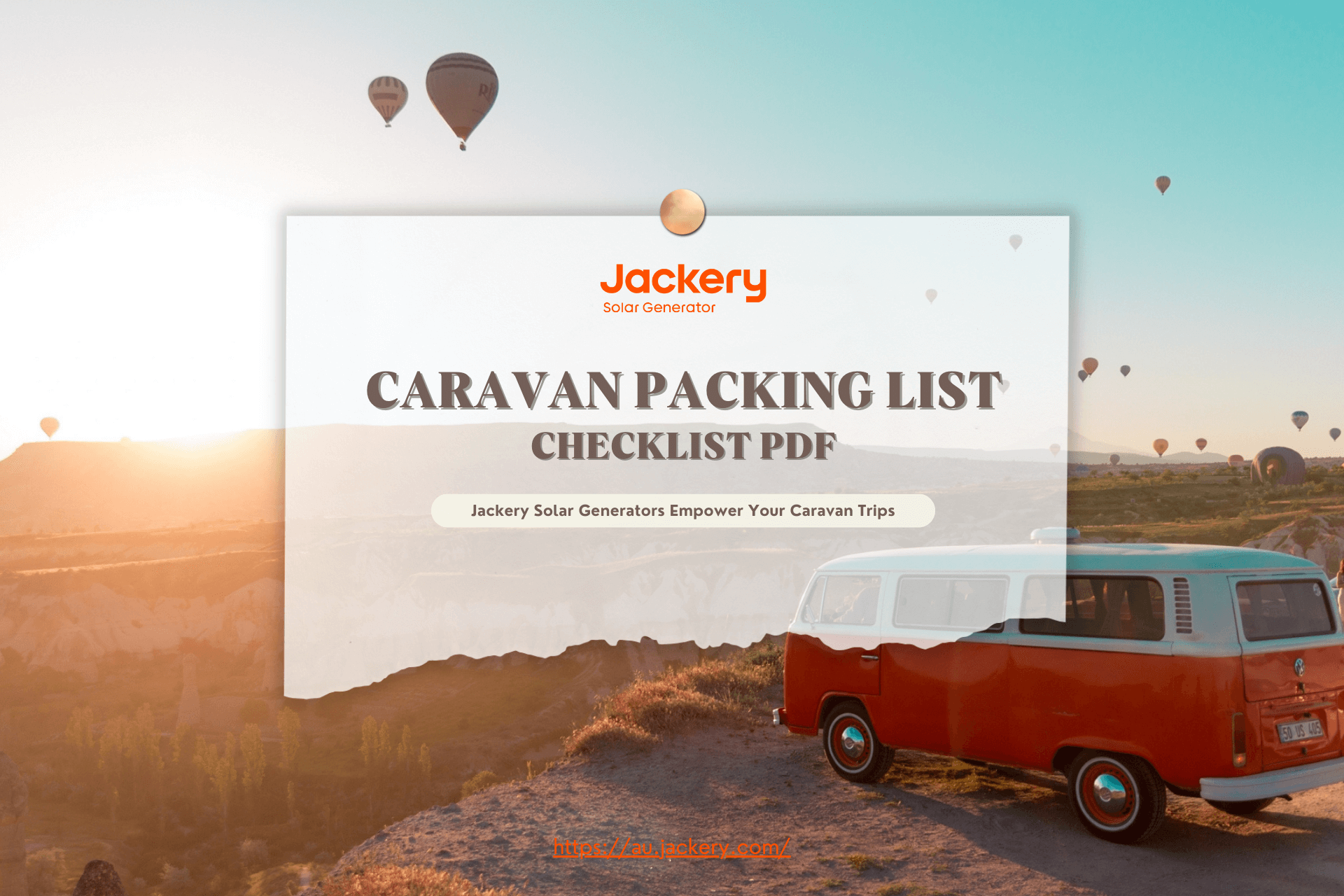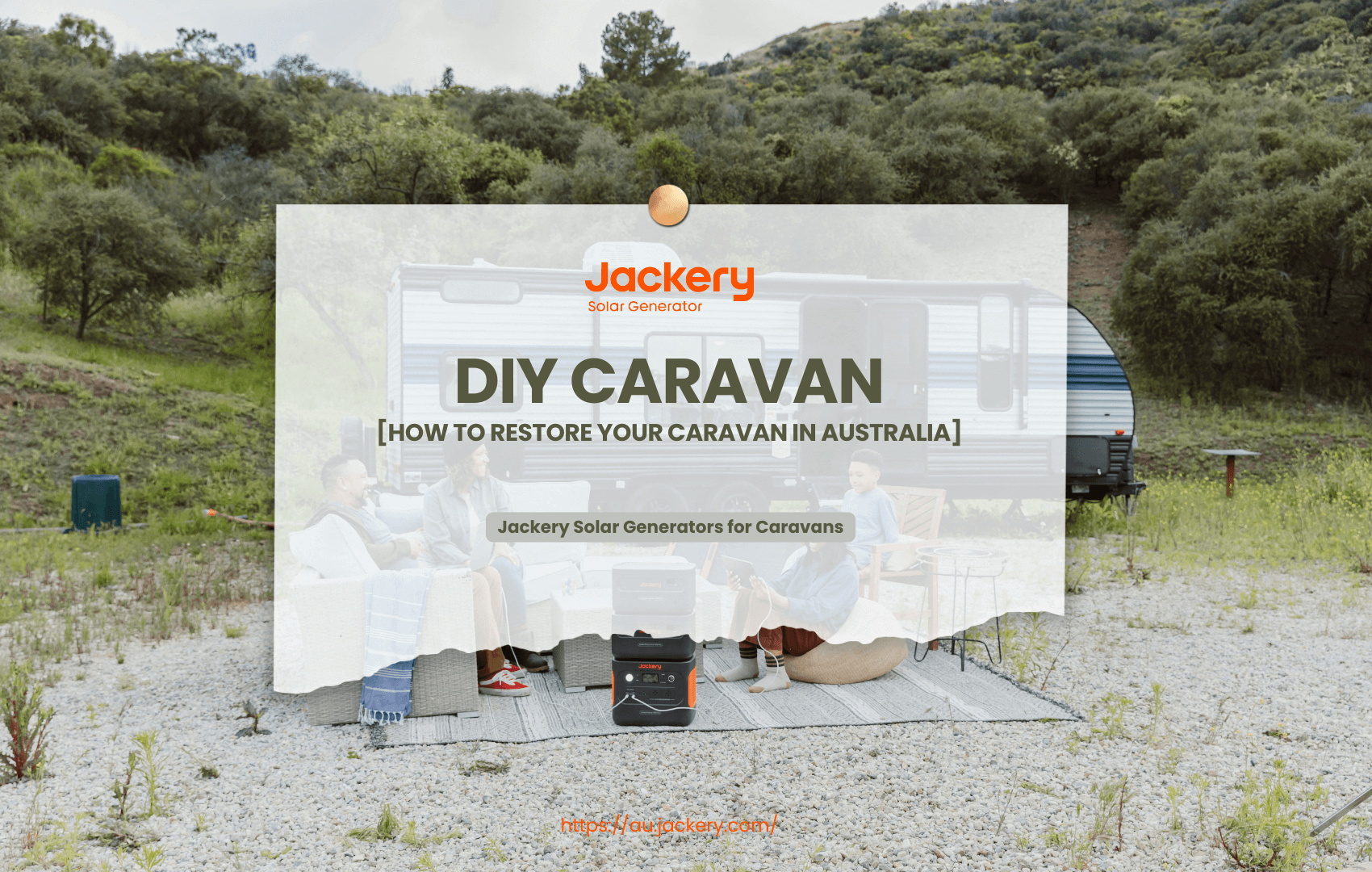|
Key Takeaways: |
|
- The various types of generators provide customers with many options with pros and cons as a caravan generator. - A detailed table clearly compares the pros and cons of the multiple types of generators. - Detailed step-by-step guide for calculating your power need and choosing the right generator for your caravan. - Factors to consider while selecting the best caravan generator. - We highly recommend the Jackery Solar Generator 600 Plus and 2000 Plus for powering caravan appliances with unlimited solar energy. |
Types of Caravan Generators
The ability to get off the usual path is part of what makes camping so enjoyable. A caravan generator can provide the power required for your essential electronic equipment. Different types of generators can support your trip in various ways.
While solar generators can be portable and environmentally benign, diesel generators can sustain high power production in harsh weather. Each generator type has advantages and proper applications. Caravan generators are available in the following varieties:
Gas Generator: The most common generator type, gasoline, is an excellent choice for low-powered tools and appliances. Although gasoline is more expensive over time than other fuels, gasoline generators are typically the cheapest. However, this might not be the case in an emergency, even if gas is available. Petroleum should only be kept in an airtight container for three to six months.
Diesel Generator: Diesel generators work well in challenging conditions, such as frigid temperatures. They are more robust because diesel's low combustion temperature reduces the engine's stress. Due to their lower fuel consumption per output, diesel generators are more economical than gasoline generators. However, because of this, they are usually bulkier and less portable.
Petrol Generator: Petrol generators turn petrol into electricity. Petrol generators use an internal combustion engine to generate energy by driving an alternator. They are usually cheaper and lighter than other sorts. However, they are often less fuel-efficient and have a shorter lifespan. They are not suitable for continual use.
Solar Generator: The sun's clean, renewable energy powers solar generators. Because they emit no emissions, they are the only generators that can be safely used indoors. In general, solar generators don't need much upkeep. Since they combine solar panels with a portable power station to transform sunlight into clean, endless, and silent electricity, solar generators, such as Jackery Solar Generator, is the ideal choice for a caravan generator.

Wind Generators:These generators produce electricity by utilising wind energy. Despite being an environmentally friendly option, they will not be suitable for all sites and require a consistent wind speed to perform well. Since the ocean is always windy, these are commonly found on yachts. Although technically suitable for car vans, they are usually not worthwhile.
Fuel Cell Generators: Hydrogen and oxygen are mixed in fuel cell generators to produce electricity; the only byproduct is water. Despite being expensive and difficult to find (at the time), fuel cell generators are quiet, effective, and environmentally friendly. However, they are currently unavailable in Australia.
Conventional & Inverter Generators: Conventional and inverter generators work differently. Traditional generators are often noisy four-stroke nits. Compared to inverter generators, they are larger and more powerful. They are better suited to heavy-duty power requirements and can run on many different fuels, with gasoline being the most common.
Instead of maintaining a steady speed, the inverter generator automatically varies the engine speed to match electrical demands. This significantly reduces fuel consumption and noise. Inverter generators are lightweight, compact, and fuel-efficient, delivering clean power to sensitive electronics. They commonly use gasoline and fuel. Due to its lower power receptacle, the inverter cannot power large appliances.
|
Types of Caravan Generators |
Pros |
Cons |
|
Gas Generator |
Commonly Available Fuel Type Low Emissions Long Shelf Life Quiet Operation |
Low Power Output Challenge to Refuel High Initial Cost |
|
Diesel Generator |
Fuel-Efficient Long Life Span Widely Available Fuel Type Safe to Storage |
Noisy Heavy and Bulky High Emissions |
|
Petrol Generator |
Low Initial Cost Widely Available Fuel Type High Power Output Lightweight and Portable |
Noisy Difficult to Storage Low Fuel Efficiency High Emissions Maintenance Required |
|
Wind Generator |
Sustainable Energy Source Silent Operation Low Running Costs |
Inconsistent Energy Production Bulky and Complex Setup Not Practical for Mobile Caravans |
|
Fuel Cell Generator |
Silent and Clean Lightweight and Compact Highly Efficient |
Expensive Limited Fuel Complex Technology Not Available in Australia yet |
|
Conventional Generator |
Affordable Readily Available Fuels High Power Output |
Noisy Fuel Storage Issues High Emissions |
|
Inverter Generator |
Quiet Operation Fuel Efficient Stable Power Output Compact and Lightweight |
High Cost Limited Power Output Complex Maintenance |
|
Solar Generator |
No emission Used Indoor & Outdoor Low Maintenance Sustainability Unlimited Source Silent Operation Lightweight and Portable |
Relatively expensive but cost-effective Weather Dependent |
Solar generators provide more benefits than any other sort for caravans in Australia. They produce pure, sustainable energy that is not harmful to the environment. They are also more silent and portable for outdoor usage. Since solar energy is free, solar generators are more financially friendly in the long run. Therefore, solar generators, such as the Jackery Solar Generators, are ideal for caravans.
What Size Generator Do I Need for My Caravan?
Generators are measured in watts (W) or kilowatts (kW). The higher the wattage rating is, the more electricity the generator can produce and the more appliances it can support. Two ratings are offered:
Continuous Output: This is the power output your appliances should not exceed. The most important rating is constant output.
Peak Output: The generator's peak power output during a brief period. Peak output is helpful for equipment that uses electric motors and compressors, like power tools and air conditioners.
Tip*: A caravan generator may be rated in KVA. Always refer to the specifications for the actual power output, which will be rated in kW or Watts.
How to Calculate Your Power Needs?
The following is the step-by-step guide for calculating your power needs and choosing the right generator for your caravan.
Step 1: Calculate the total running watts (your appliances have two wattage values: one for starting and one for running) of all the appliances you wish to power simultaneously.
Step 2: Determine the highest initial wattage of the appliances. This will likely be your air conditioner.
Step 3: Add your total running watts to your maximum starting wattage.
Step 4: Pick a generator with a maximum output slightly higher than your determined value. A little safety buffer should be included in the purchase, and your total running watts should be less than the generator's "rated output"—basically, what it is intended to produce over an extended time.

Examples of Calculating the Caravan Power Needs
Here are a couple of example scenarios to demonstrate the math in action.
Example 1
In the first scenario, you're camping off-grid in Australia and want to simultaneously power an air conditioner (AC), a television (TV), and a refrigerator. Below are the estimated power needs for each appliance:
Air Conditioner: A portable air conditioner (AC) has a cooling capability of 2.2 kW (2,200 watts) and may require 600 watts of running power and 1,800 watts of startup power.
TV: A small 32-inch LED TV typically consumes around 50 watts of running power.
Fridge: A portable camping fridge uses approximately 65 watts of running power. As a compressor refrigerator, the starting power may be slightly higher, approximately 120 watts.
To determine the generator size, perform these steps:
Calculate the total running watts. 600 (AC) + 50 (TV) + 65 (Fridge) = 715 watts.
Find the highest starting wattage: The AC has the highest beginning output, 1,800 watts.
Add the highest starting watts to the total running watts. 1,800 + 715 equals 2,515 watts.
Based on this figure, you'll require a generator with a minimum output of 2,515 watts. Consider a generator with a slightly larger output to be safe and provide room for future power needs.
Example 2
In the second scenario, you're camping off-grid, and everything is more significant. You want to power a larger air conditioner (AC), a larger TV, a larger refrigerator, charge phones and laptops, and turn on lights simultaneously. Here's a preliminary estimate of what each will require to function.
Air Conditioner: A larger air conditioner has a cooling capacity of 3.2 kW (3,200 watts) and needs around 1,000 watts of running power and 2,800 watts of starting power.
TV: A 55-inch LED TV consumes approximately 100 watts per hour.
Fridge: A larger portable camping fridge requires approximately 100 watts of running power. As a compressor refrigerator, the starting power may be slightly higher, approximately 150 watts.
Charging two smartphones may require around 10 watts each (20 watts total), while charging a laptop requires roughly 65 watts of operating electricity. Energy-efficient LED lights, such as four 10W LED lights, would consume about 40 watts per hour.
Let's calculate these costs:
Total Running Wattage: 1,000 (AC) + 100 (TV) + 100 (fridge) + 20 (phones) + 65 (laptop) + 40 (lights) = 1,325 watts.
The AC has the highest beginning wattage (2,800 watts).
Maximum Starting Watts + Total Running Watts: 2,800 + 1,325 = 4,125 watts.
Based on this figure, you'll require a generator with a minimum output of 4,125 watts. Consider a caravan generator with a slightly larger output to be safe and provide room for future power needs.
How to Choose the Best Caravan Generator?
When picking the best generator for your caravan, there are a few factors to consider. You must choose one with enough wattage to power everything you need. This includes your appliances and air conditioning units. It must also be fuel-efficient, portable, and ideally silent so you do not bother your camping neighbours while they are away. Here are some things you need to consider:

Fuel Type and Generator Type: The table above can help you choose the right generator with the most suitable fuel type. When making a decision, consider fuel availability, cost, and efficiency.
Portability: A reliable and portable generator is useful during caravan trips. When buying a caravan generator, look for features that make it easier to manoeuvre and transport, such as roller wheels or handles. Also, considering the generator's size and weight, a smaller, lighter generator will be easier to transport and store, especially since generators are usually placed in the front toolbox. In addition, some models include built-in carrying cases, making them even more portable.
Weight and Size: The weight of small camping generators is significant when caravanning and camping, especially if you are travelling full-time across Australia. Weights of tow rigs and caravans are constantly scrutinised, so selecting the lightest generator for your needs can benefit your cargo.
However, you will need to calculate the minimum output for the generator depending on which appliances and gadgets you want to power before looking for the lightest generator. Generally speaking, you will need a 2000W—2600W generator for most caravan and camping setups. This is usually enough power to keep the essentials running without overloading any appliance.
Run Time: Check the generator's runtime with a full fuel tank. Longer runtimes can be easier because you don't need to recharge as frequently.
Power Ratings: Generators can measure their power capability in Watts (W) or Kilowatts (kW). The higher the power rating, the more electrical items you can run alongside your generator. Two ratings are provided: 'Continuous Output' and 'Peak Output'. You should pay attention to continuous since it indicates how much of a total draw your device requires.
Peak Output is a quick burst of extra power for motors and compressors, such as those used in air conditioners and power tools. Finding the correct generator, particularly in power, might be challenging. KVA is a popular method of rating generators; however, before purchasing, check the specifications for the exact power output in kW or Watts.
Noise Level: Noise can be a significant concern during caravans, particularly in shared campgrounds or parks. Choose a generator with a lower decibel rating to reduce noise pollution (and how irritated your other campers become). Inverter generators are quieter than conventional generators, which is a significant advantage.

However, generator noise levels can be misleading, as manufacturers may test generators under different conditions, resulting in a lower sound output in the real world. If quietness is your top priority, consider a small camping generator like the Jackery Solar Generator 600 Plus.
Parallel Capability: Some parallel inverter generators can be connected in parallel to improve their total power output. This capability is helpful if you require more power in the future but do not want to invest in a larger generator immediately.
Capacity Of the Fuel Tank: The fuel tank capacity in a caravan or camping generator is essential since it dictates how much fuel the generator can hold and how long it will run before needing to be refilled. A larger fuel tank means you won't have to refuel as frequently, which is helpful if you're going on an extended camping trip or off the grid. A larger gasoline tank also provides more flexibility and ease while utilising the generator because it eliminates the risk of running out of fuel.
Maintenance and Support: Investigate the ease of maintenance and availability of replacement components for your preferred generator. Consider the manufacturer's warranty and customer support.
Safety Features: Look for generators with safety features like overload prevention, low oil shutoff, and spark arrestors to protect the generator and your appliances.
Budget: Consider your budget and the cost of the caravan generator. Compare the initial investment against the long-term fuel and maintenance costs, and select the generator that provides the best value for your unique requirements.
The Best Caravan Generators Recommends: Jackery Solar Generators
Solar generators are particularly well-suited for caravan use in Australia due to several factors, aligning with the country's unique environment and the typical caravanning lifestyle. Australia enjoys high solar irradiance, making solar power generation highly efficient. This abundant sunlight ensures solar generators can consistently recharge, providing a reliable power source.
Many Australian caravanners seek to explore remote areas far from traditional power grids. Solar generators allow them to venture into these locations without relying on mains power. This self-sufficiency is crucial for extended trips and off-grid camping. Solar generators produce clean, emission-free energy, aligning with the growing desire for sustainable travel. This is particularly important for preserving Australia's pristine natural environments.
We highly recommend the Jackery Solar Generator, which combines Jackery Solar Panels with a Portable Power Station, to take advantage of solar energy in Australia. Unlike noisy petrol generators, solar generators operate silently, enhancing the tranquillity of remote camping experiences. This is a significant advantage in campgrounds and natural settings.
Jackery Solar Generator 2000 Plus
The Jackery Solar Generator 2000 Plus sets a new benchmark in portable power solutions, offering unparalleled performance, safety, and durability. With a 2 to 12 kWh expandable capacity, it can quickly charge mall to large caravan appliances.
This solar generator is designed for longevity and reliability. It is built with a LiFePO4 battery that boasts a 10-year lifespan and 4,000 charging cycles. Why is this generator suitable for powering caravan appliances? It accommodates additional battery packs, enhancing its capacity from 2 kWh to an impressive 12 kWh, making it ideal for camping and caravan uses.
The 2000 Plus features an extended standby mode that maintains a 50% charge for up to 2 years. Feel assured that your appliances are connected to our 2000 Plus! With a 20ms EPS, essential devices such as your refrigerator and stove remain operational instantaneously during camping.
The Solar Generator 2000 Plus requires only 2.5 hours for a complete sun charge when utilising six SolarSaga 200W solar panels. The power source achieves complete autonomy by using solar energy for charging, eliminating reliance on the power grid.

(*The working hours are only for reference; the actual working hours depend on your usage.)
Jackery Solar Generator 600 Plus
The Jackery Solar Generator 600 Plus is the perfect blend of portability and durability. With a compact size of just 30 x 21.9 x 19.7 cm and a weight of 7.3kg, it's easy to store and transport. Its rugged design and fireproof materials ensure reliability, while a foldable handle makes it effortless to carry wherever your adventures take you.
Despite its small size, the Solar Generator 600 Plus packs a punch with 800W output power and a 632Wh capacity. It supports many devices, from smartphones to portable coolers, making it ideal for caravan trips.
Its intuitive design includes a Smart Screen for real-time updates on capacity, charging status, and other critical information. With this compact yet powerful generator, you'll always stay prepared, no matter where you are.
A complete charge in 1.6 hours, enhanced battery pack lifespan by 30%, designed for long-term reliability. Achieve a full charge from 0 to 100% in one hour, ensuring emergency readiness. The app enables the Emergency Super Charging mode, and the Fast and Quiet Charging modes offer enhanced battery protection.

(*The working hours are only for reference; the actual working hours depend on your usage.)
Best Caravan Generators FAQs
The following are the frequently asked questions about the best caravan generators in Australia.
1. What size generator do I need for my caravan?
A generator with a power output of 2000 watts is usually adequate for most caravanning requirements. If you're planning a larger adventure or a family caravan holiday, a more powerful 3000 to 4000-watt caravan generator may be the best option. You can use the calculation method in the above parts to calculate the exact numbers.
2. Will a 2kVA generator run a caravan air conditioner in Australia?
A 2kVA generator will power most air conditioners, but larger units will struggle and, in rare cases, will not function. It is widely assumed that you will require a generator with a rating of at least 2.5kVA, preferably around 3.5kVA.
3. How do I calculate the size of the generator I need?
You must determine your power requirements by adding the total watts and calculator results. Divide the total wattage by 1000 to get kilowatts, then add a 20% safety buffer. You will get the minimum generator capacity you need for your home.
4. Will a 7kVA generator run a house?
A 7kVA generator is generally sufficient to run the essential household appliances in your house during extreme circumstances like power outages. However, it is crucial to assess your specific power needs and consult with a professional to ensure the safe and effective operation of a 7kVA generator for everyday use.
5. What will a 12000-watt portable generator run?
A 12000-watt portable generator can power multiple appliances simultaneously, such as a refrigerator, dishwasher, window air conditioner, washing machine, electric stove, sump pump, furnace, television, small appliances and lights.
Final Thoughts
In conclusion, choosing the best caravan generator in Australia is not easy. You will need to consider the generator type that best fits your scenario. You must look through various factors related to the generator type to find the best model. The Jackery Solar Generators 2000 Plus and 600 Plus can sustain your caravans within different conditions and requirements with clean and stable power using zero-cost solar energy.

